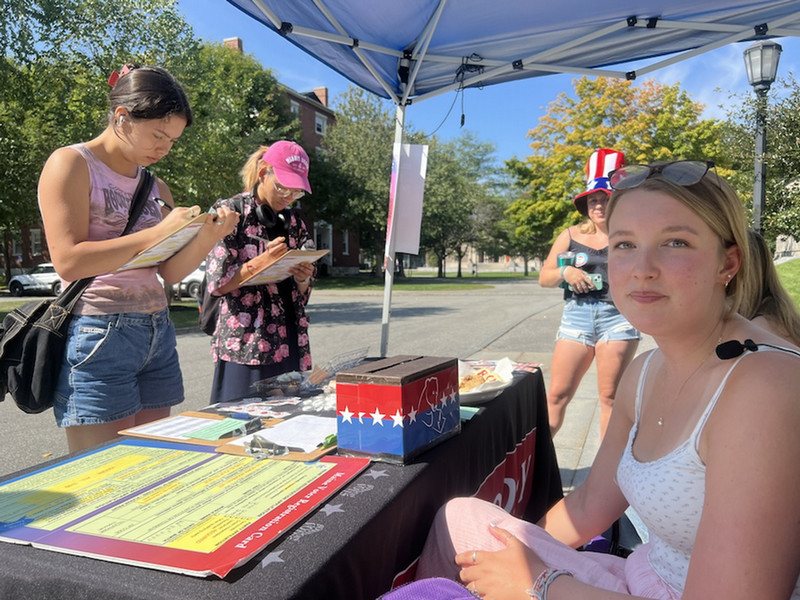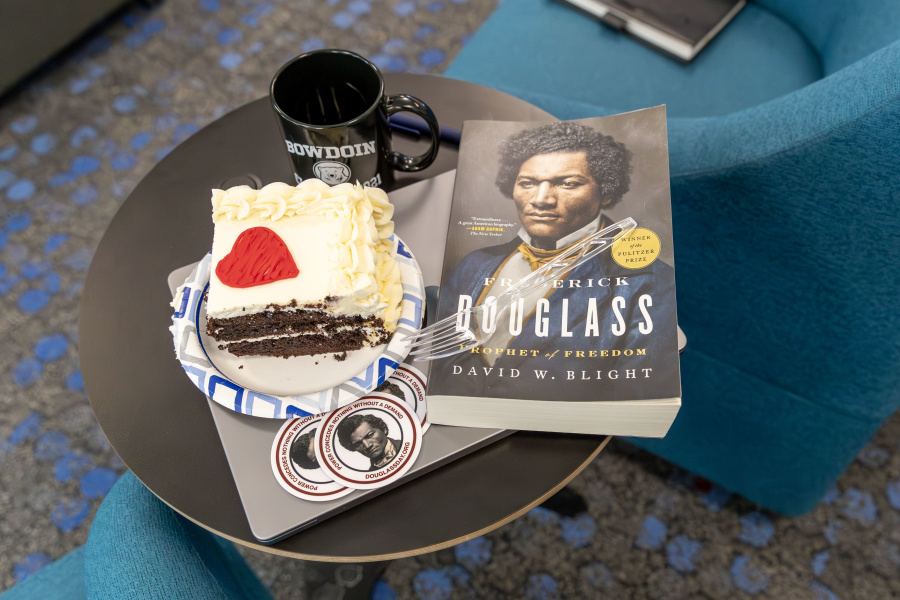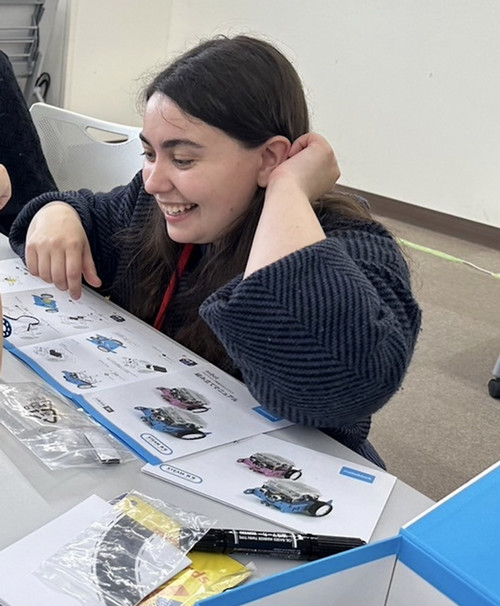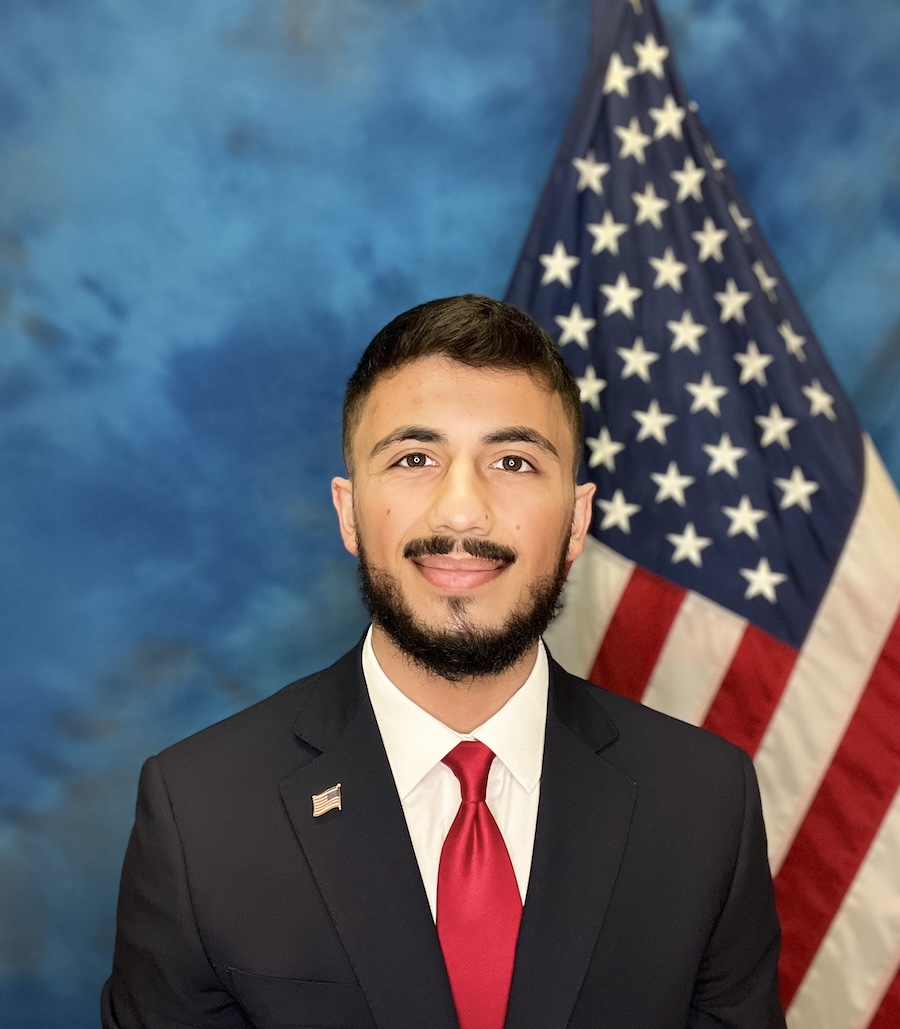Bowdoin Students Focus on Finding Solutions
By Lily Echeverria ’26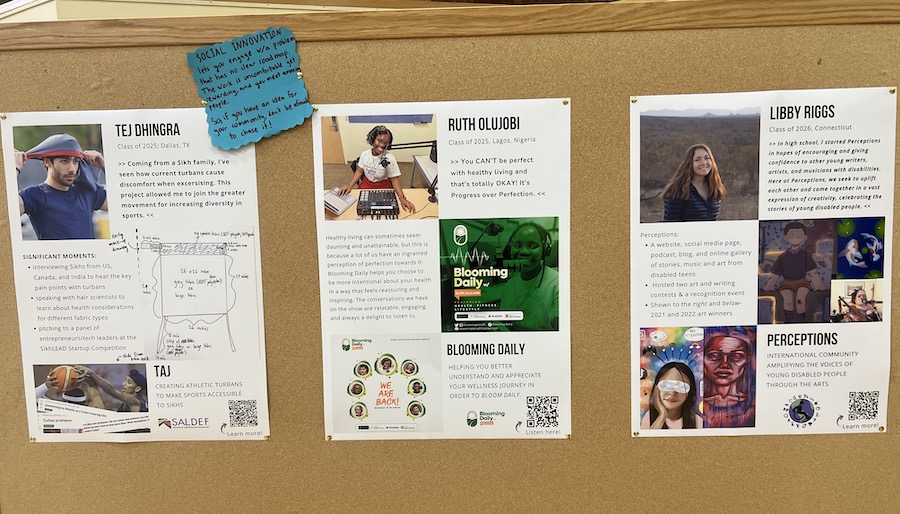
This fall, when Moana Gregori ’26 organized Bowdoin's first-ever Solutions Exhibition in Smith Union, she featured a variety of organizations from around the world that have implemented replicable solutions to issues found in most communities, such as pollution and homelessness.
She also trained her focus locally, and highlighted several Bowdoin students who have launched their own endeavors. The exhibition included Tej Dhingra ’25, who has designed a breathable turban for athletes; Ruth Olujobi ’25, who runs a wellness podcast; Naomi Lopez ’26, who has designed a high school sustainability guide; Eisa Rafat ’25, who is distributing solar technology that helps filter water; and Libby Riggs ’26, who oversees a platform to amplify the voices of disabled children through the arts.
In the past, Bowdoin Magazine has reported on the activities of Dhingra and Olujobi—you can read about Dhingra here and Olujobi here. To learn more about the projects of the three others, reporter Lily Echeverria ’26 recently reached out to Lopez, Rafat, and Riggs.
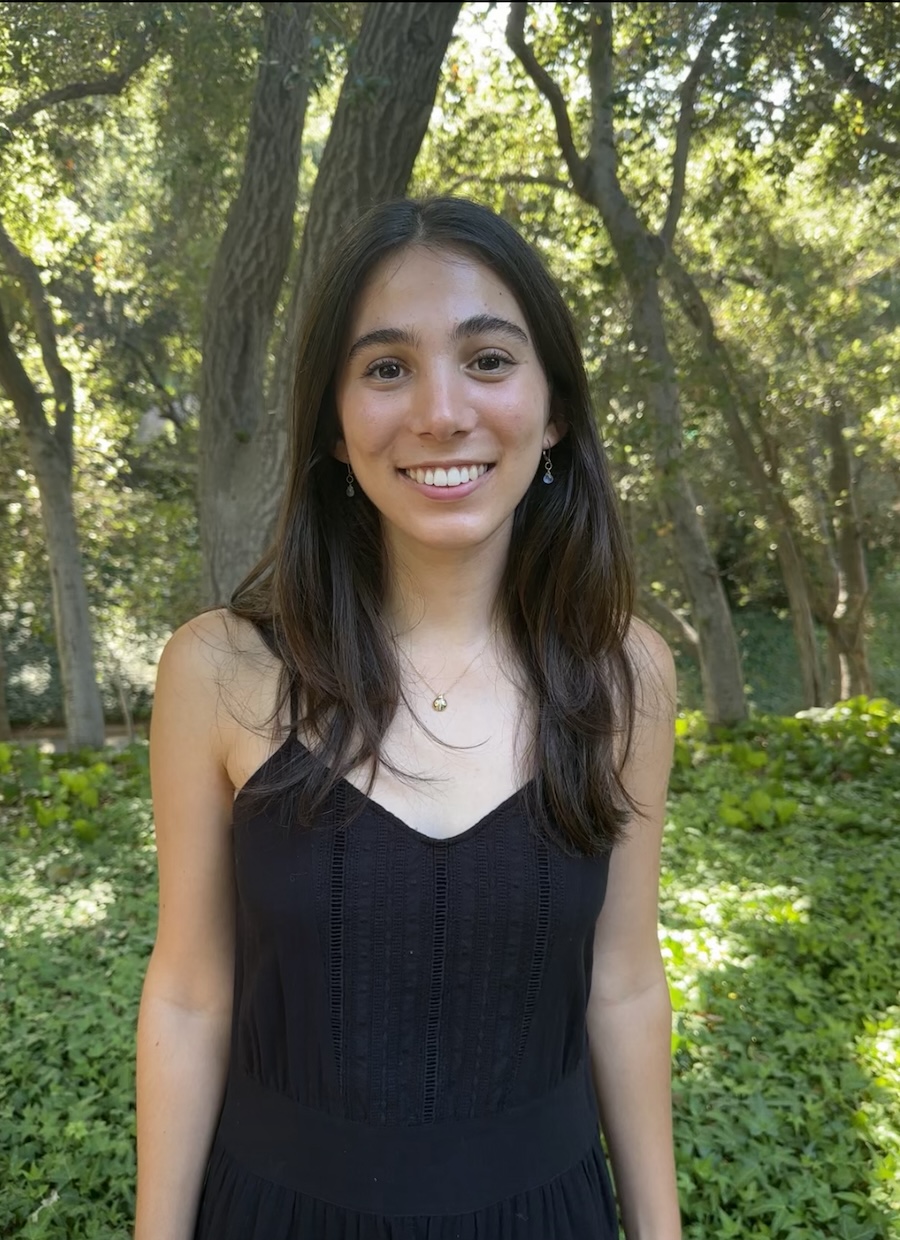
Sustainability Solutions for High Schools
Naomi Lopez ’26 began a project to outline some of the steps that can be taken on a small scale to combat the very large-scale issue of climate change. She launched her initiative when she was still in middle school, in Los Angeles, California. She worked with friend Sascha Weiss to develop a High School Sustainability Guide to allow students to calculate their school’s carbon footprint and find ways to reduce its emissions.
The two friends continued working on the guide throughout high school, completing it in time to launch an interactive website their senior year. “We were able to speak about it at a couple of conferences, which was really cool," Lopez said. "And from there we had people who reached out to us who were excited about using the site. So what we’re focused on right now is trying to create more of a network so it can be distributed to more people.”
The guide offers a set of calculators that cover four categories of a school’s carbon footprint: electricity, gas, food packaging, and transportation. Then it suggests a road map to reduce that impact.
Lopez said she was inspired to create the manual after observing her peers’ pessimism about climate change. Many reported feeling helpless on an individual level to battle such a large problem.
“We started thinking, ‘What are ways that young people can actually make a tangible impact on this really overwhelming crisis?’” she said. “We don’t own large corporations, we can’t even vote yet, but we do go to schools. Schools that create waste and use energy.”
Though her work began by encouraging climate action in schools, the project's reach has since expanded. After one of their speaking engagements, Lopez and Weiss were asked to consult with a network of schools in western Kenya. The pair met with the Kenyan students through Zoom over the course of a year, discussing a range of topics with them and devising different types of energy solutions. They eventually traveled overseas to meet in person.
“The students were excited about doing environmental projects at their schools because there’s a lot of deforestation and other forms of environmental degradation in the region,” Lopez said. "What we’re working on right now is trying to address the underlying cause of deforestation and trying to work with the schools to brainstorm different renewable sources of energy that they can use.”
Environmental justice and conservancy is something that Lopez has been passionate about for a long time, and she sees devoting herself to it for the foreseeable future.
“I think at the beginning [the guide] was just an idea that sounded cool. But as I conducted the work and learned more about climate change and how far-reaching the effects are—and how interdisciplinary—it just made me realize how important I found the work to be and how much I wanted to continue to do it,” she said.

Using the Sun to Produce Drinkable Water
Eisa Rafat ’25 was inspired by a similar calling when he learned about the Solar Water Project, a charity dedicated to using innovation and technology to help communities impacted by climate change. He wanted to be involved any way he could, and started fundraising for the cause. But soon his passion turned into a desire to launch the project’s first US chapter, which he created in his home state of Texas. Rafat and the team he assembled are hoping to launch another five chapters in the US by the end of next year.
“I realized quickly that this was something I really wanted to do, and I think going into it I also knew I wanted to work with them in a more meaningful way,” he said.
The Solar Water Project uses a tool called an Oasis Box, a water filtration and extraction system that is completely solar-powered. “It filters and puts out up to 10,000 liters of water per day, which is enough for almost 5,000 people at two liters of water per person,” Rafat said. “It’s good for a village and...lasts for about twenty-five years, which is a significantly longer amount of time than other solutions.”
Rafat said many alternative hand pumps often break within the first few years of use, creating waste and leaving many without potable water.
“With hand pumps, the only way people find out the water quality is bad is by getting sick,” he said. “That’s a really terrible measure to rely on.”
The Oasis Box contains a tracker that consistently measures water quality, ensuring the boxes are healthy and dispensing clean water.
“The organization spent ten years just in the research phase of the box and what the optimal filtration system is,” he said. “It has a lot of really neat pieces of technology packed into it—like all of them have phone chargers and such.”
The actual unit is the size of a car, but the team is working on making the technology smaller and more mobile to reach more places. Despite its large size, the impacts of the tool are making a difference. “There are over 150 deployed in six countries. And to date, I think we’ve provided over 200 million cups of clean water,” Rafat said.
Rafat sees a connection between this work and what he seeks to do later in life.
“I want to work in nonprofit consulting, and I feel like getting hands-on experience with a nonprofit was really, really important to that piece,” he said. “I really love the team. They’re a great group of people.”
Looking forward, Rafat wants to ensure the company’s work is documented correctly and shared widely. He is going to Pakistan this December to meet the international team and work on the ground with the organization.
“I’m trying my best to use this trip to meaningfully document the work, hopefully get a social media presence for the organization, and try to get a little more awareness about the solutions,” he said. “Just through posting about it and trying to push it to the right people.”
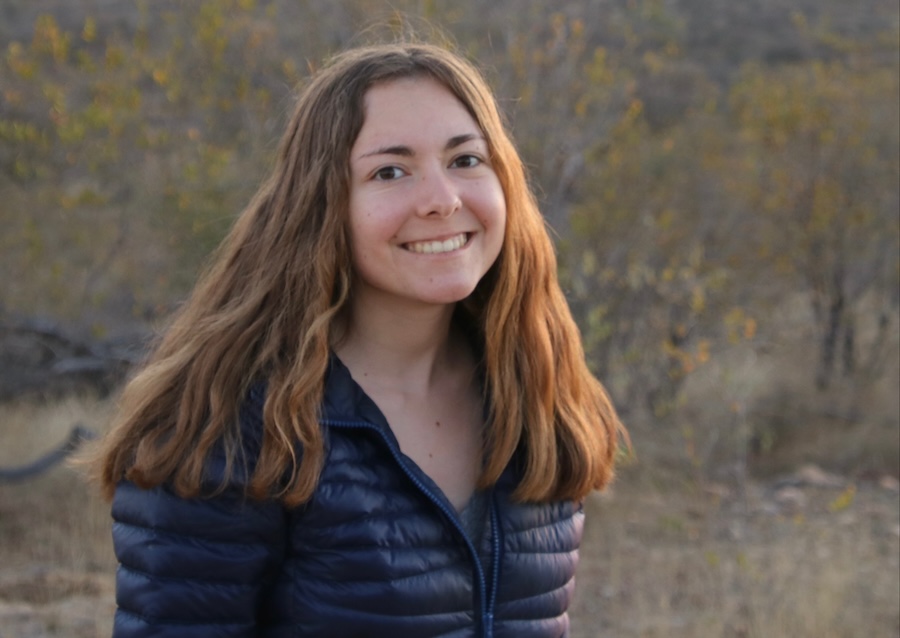
Helping Disabled Young People Express Their Vision
Getting solutions to the correct people is something that Libby Riggs ’26 understands. In 2020, she began Perceptions, an international community that uses art to amplify the voices of young people with disabilities.
As a young person with a disability herself, Riggs sees writing as essential to her sense of self. “In middle school and even earlier, I always loved to write, and I was lucky to have a supportive network of both teachers and family to encourage me and define my voice through writing,” she said. “That was where I became most confident in how I explore my identity of disability, and I found pride in that.”
On her website she writes, "I started Perceptions in hope of encouraging and giving confidence to other young writers, artists, and musicians with disabilities. I strongly believe that these art forms have the ability to alter a person’s life."
Riggs originally secured funding for the project through a Girl Scout Gold Award and the University of Iowa’s Between the Lines program, an international writing project. Through that initiative, which was funded by the US Department of State’s Cultural Affairs Program, Riggs met others who supported her mission and joined Perceptions.
“We have five team members currently, and we come from all areas of the world,” she said. “We’re planning to continue empowering young disabled people through our Instagram account and our website, but right now, we’re thinking of ways we can directly impact different communities.”
Riggs’ website hosts writing competitions for people age twelve to twenty-six. It also features a gallery with stories and art, and short biographies of the artists. She is currently working on events to be held as part of Disability Pride Month in July.
“[We want to have] a book recommendation list, where people can send us their libraries, and in return we can send them the same type of list from disabled writers,” she said.
Creating a community where young people with disabilities can feel empowered to do what they want with their lives is important to Riggs. Perceptions' mission statement is to not just "illuminate the multitude of voices and stories from the disability community," but also "to educate, inspire, and unify."
“I wanted to give that feeling of empowerment to other young disabled people, especially because often in the media, disability is stigmatized, disability is underrepresented,” she said.
Riggs is interested in writing and in public service after college. “Perceptions has taught me the power of the arts and the power of uplifting other disabled people’s voices. And for me, thanks to my team, I’ve truly been able to grow as both a student and a person,” she said.
Each student expressed gratitude to Moana Gregori ’26 for executing the week and the exhibition, and for introducing them to other students making tangible change.
